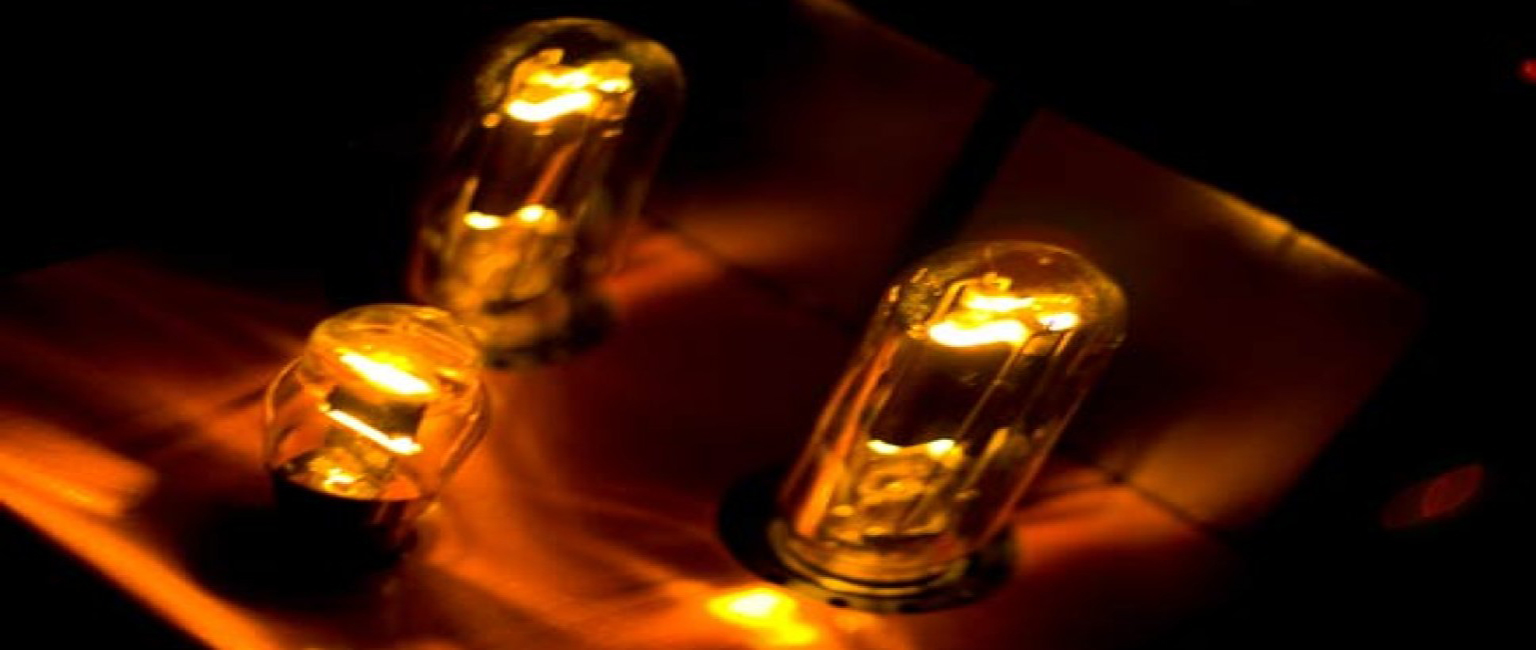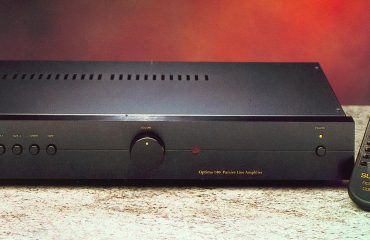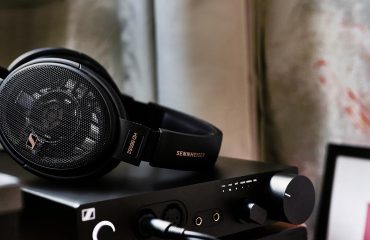
The final day!
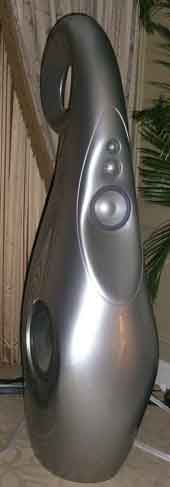 This is the day we tied up the loose ends, particularly at the Venetian, the site of most of the high end audio exhibits. We’ve already mentioned that CES in general was smaller this time, and that included the high end brands, many of which were uncharacteristically absent. Where was Totem? Or Green Mountain Audio? Even so, we didn’t find time to tour everything and to hear it all, because it can’t be done. And we are sad to say that on the second half of this final day we resisted desperate pleas for us to come in and hear this or that marvellous new technology. We may have overlooked some gems, but just as surely there were people we needed to see.
This is the day we tied up the loose ends, particularly at the Venetian, the site of most of the high end audio exhibits. We’ve already mentioned that CES in general was smaller this time, and that included the high end brands, many of which were uncharacteristically absent. Where was Totem? Or Green Mountain Audio? Even so, we didn’t find time to tour everything and to hear it all, because it can’t be done. And we are sad to say that on the second half of this final day we resisted desperate pleas for us to come in and hear this or that marvellous new technology. We may have overlooked some gems, but just as surely there were people we needed to see.
A show is never a success unless we find a loudspeaker that is “off the wall,” either visually or conceptually. Such finds are sometimes very good, even superb, but that’s not truly the point. Weird is what gets people talking.
A prime candidate this time is the Vivid Audio Giya G-1. And here the laughing stops, because the Giyas were in the room of Convergent Technologies (not to be confused with Divergent Technologies, though the two were actually placed one across from the other three years ago). Convergent makes amplifiers and preamplifiers with breathtaking price tags…but also with breathtaking musicality. Would a $58,000 price tag scare you? No? Good.
The show was the official launch of the new Legend preamplifier, a $20K tube unit with a Teflon circuit board, step-up transformers for the phono section, and build quality that places it well above the typical audio product.
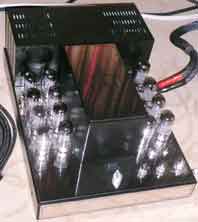 It was also the launch of the Signature edition amplifier ($40K), shown at left. Note the number of 6550 output tubes, 16 of them. And this is a monoblock! The price does include two of them, if that’s any consolation.
It was also the launch of the Signature edition amplifier ($40K), shown at left. Note the number of 6550 output tubes, 16 of them. And this is a monoblock! The price does include two of them, if that’s any consolation.
This was one of the many rooms with working turntables, in this case an EAT Forte with Akeda arm and Benz Micro cartridge. There was certainly no “zing,” and the sound was more polite than brash, but it was also smooth and untiring. A wide array of instruments was reproduced with plausible timbres, including the cornet and the bass guitar. Hugh Masakela’s Stimela (from the Hope album) had good impact, and we stayed to hear more of the album.
 The Convergent amplifier may seem like a bargain alongside the VAC Statement 440 amplifier, shown at right. No, you’re not seeing some strange reflection, this is a two-chassis model. Not obvious from the photo is the fact that the top part is mounted on a springy support. The price is a lofty $72,000. It was matched to a Signature MkIIA preamplifier, which adds another $18K to the bill if you order it with the optional phono stage.
The Convergent amplifier may seem like a bargain alongside the VAC Statement 440 amplifier, shown at right. No, you’re not seeing some strange reflection, this is a two-chassis model. Not obvious from the photo is the fact that the top part is mounted on a springy support. The price is a lofty $72,000. It was matched to a Signature MkIIA preamplifier, which adds another $18K to the bill if you order it with the optional phono stage.
Raysonic was at the show with an array of its dramatically-styled components: digital players, amplifiers, preamplifiers. Raysonic is based in Canada, though it owns a factory in China. Its Reference 23 tube monoblocks are the most expensive we’ve seen from the company, at $9990 the pair. They were driving Acoustic Zen speakers, and the sound was warm and pleasant, providing a rest from certain noisy and zingy rooms that are all too common at any show.
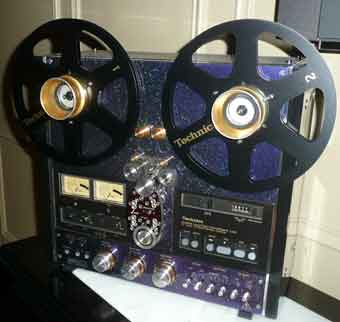 You probably know that, before becoming a magazine, we were a broadcast production studio, and we still own four Technics RS-1500 recorders, possibly the best open-reel recorder ever built, but for the Ampex ATR-100. And here was J-Corder, a company that refurbishes and upgrades these fine machines. The electronics are replaced, to provide an extra 6 to 8 dB of headroom, and even new meters are installed. The one shown here has a glittery finish like the ones used on custom cars (J-Corder’s founder used to be in that business). Supply is limited to what they can buy on the second hand market, and no two machines are exactly alike. This one would go for just under $7000.
You probably know that, before becoming a magazine, we were a broadcast production studio, and we still own four Technics RS-1500 recorders, possibly the best open-reel recorder ever built, but for the Ampex ATR-100. And here was J-Corder, a company that refurbishes and upgrades these fine machines. The electronics are replaced, to provide an extra 6 to 8 dB of headroom, and even new meters are installed. The one shown here has a glittery finish like the ones used on custom cars (J-Corder’s founder used to be in that business). Supply is limited to what they can buy on the second hand market, and no two machines are exactly alike. This one would go for just under $7000.
Oracle has been coming to CES (and sometimes T.H.E. Show) for years, usually with one or another amplifier or preamplifier, plus of course its famous Delphi MkV turntable. This time it had a surprise…the MkVI.
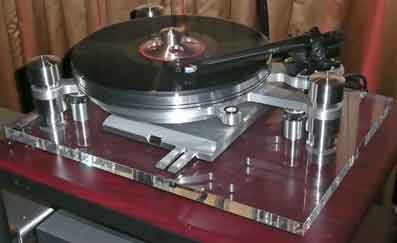 The changes are not immediately obvious, and indeed some — such as the new bearing — can’t be seen at all. In this picture, however, you’ll see little stabilizers inboard of each suspension pillar. The stabilizers are easily adjustable, and the effect is obvious. With a “MkV” setting (i.e. adjusted not to have any effect), surface noise was apparent, and there was a bit of a bright veil over the music. With correct adjustment, the pops and clicks all but vanished, and the music became smoother and more natural.
The changes are not immediately obvious, and indeed some — such as the new bearing — can’t be seen at all. In this picture, however, you’ll see little stabilizers inboard of each suspension pillar. The stabilizers are easily adjustable, and the effect is obvious. With a “MkV” setting (i.e. adjusted not to have any effect), surface noise was apparent, and there was a bit of a bright veil over the music. With correct adjustment, the pops and clicks all but vanished, and the music became smoother and more natural.
Prices? The basic turntable is $7700, or $9000 with the Turbo power supply. That doesn’t include tone arm or cartridge, and so the table shown here comes out to $16K. Owners of MkV turntables will be pleased to know that an upgrade is available, for $1700 plus an installation fee of about $100 (plus shipping, we would guess).
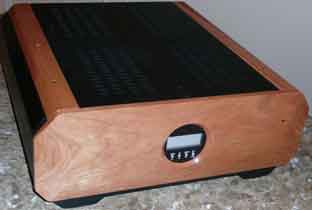 Tenor was showing its new hybrid preamplifier and monoblocks (that’s the preamp in the photo), though both remain in prototype form. You possibly know that Tenor is not an economy-oriented company, and the prices are certainly lofty: $100K for a pair of 350M amps, $75K for the line stage preamplifier, and another $50K for the phono stage (that beats Boulder, once the champion for the most expensive phono preamp). The demonstration was done on a Da Vinci turntable, with huge Hansen Grand Master speakers, themselves not far from the quarter million dollar mark.
Tenor was showing its new hybrid preamplifier and monoblocks (that’s the preamp in the photo), though both remain in prototype form. You possibly know that Tenor is not an economy-oriented company, and the prices are certainly lofty: $100K for a pair of 350M amps, $75K for the line stage preamplifier, and another $50K for the phono stage (that beats Boulder, once the champion for the most expensive phono preamp). The demonstration was done on a Da Vinci turntable, with huge Hansen Grand Master speakers, themselves not far from the quarter million dollar mark.
We enjoyed some retro music, an old Ian and Sylvia LP. The guitar transients were just terrific, perhaps a bit bright now and then, with a satisfying liveliness that is (or should be) the goal of a designer.
 Big as the Hansens are, they’ve got nothing on the Ocean Way speakers, one of which is at right. Ocean Way is a Hollywood recording studio, whose walls remember the voices of all the great singers we’ve admired, and this is a slightly domesticated version of the studio monitors. Their size would seem to make it unlikely candidate for a consumer electronics show, but we were told they got a dozen orders after last year, and were closing in on that number this time too. Though this very efficient (108 dB) system can be driven by a 10 watt amplifier, Ocean Way had in fact brought along a stack of Olive amplifiers offering up 1100 watts!
Big as the Hansens are, they’ve got nothing on the Ocean Way speakers, one of which is at right. Ocean Way is a Hollywood recording studio, whose walls remember the voices of all the great singers we’ve admired, and this is a slightly domesticated version of the studio monitors. Their size would seem to make it unlikely candidate for a consumer electronics show, but we were told they got a dozen orders after last year, and were closing in on that number this time too. Though this very efficient (108 dB) system can be driven by a 10 watt amplifier, Ocean Way had in fact brought along a stack of Olive amplifiers offering up 1100 watts!
The sound? It’s very good on high resolution material played from a Tascam pro DVD recorder. The impact can blow you across the room, but extreme bass had a somewhat “cardboard” sound, as the thin hotel walls all but folded under the pressure. We were into structural damage mode, here, though the speakers have such a smooth sound that they didn’t seem to be playing as loud as they were.
At VTL, Luke and Bea Manley were showing their new version of their preamplifier, now with the (tube) phono stage built-in. They ran a comparison of this with their top preamplifier and outboard phono stage. The lower-cost combination was very good, and even sounded a little warmer, but with the warmth came what seemed, by direct comparison, like a blunting of the highs. The “big iron,” as Luke called it, let us hear more of the music. Switching the huge Siegfried monoblocks from tetrode mode to triode put the cherry on the sundae, with impressively solid percussion and fine transients on plucked bass. There was, of course, still all the power you could reasonably want, though Luke said he prefers tetrode mode for the really dynamic recordings. Both the Spiral Groove turntable and a dCS Paganini player were used for the comparisons. This was one of the good rooms
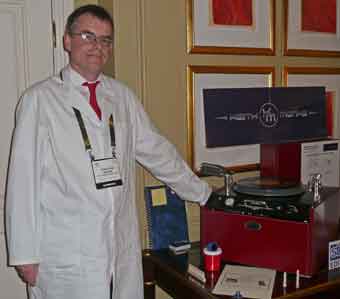 We were pleased to meet Jonathan Monks, who was showing off the Ruby edition of the Keith Monks LP-cleaning machine (It was featured in the Gossip&News section of UHF No. 88). If you’ve never watched a Keith Monks in action, it’s a sight to see, with its “tone arm” tracking across the grooves, turning them grey with the cleaning fluid, before vacuuming it all up. The machine is a work of art besides.
We were pleased to meet Jonathan Monks, who was showing off the Ruby edition of the Keith Monks LP-cleaning machine (It was featured in the Gossip&News section of UHF No. 88). If you’ve never watched a Keith Monks in action, it’s a sight to see, with its “tone arm” tracking across the grooves, turning them grey with the cleaning fluid, before vacuuming it all up. The machine is a work of art besides.
Some other quick notes…
We heard the new flagship loudspeaker from Audio Physic, the Cardeas ($36,000), below right. Fed from a Nagra preamp and NAIM gear, it was exceptionally good, with strong rhythm and an engaging connection to the music.
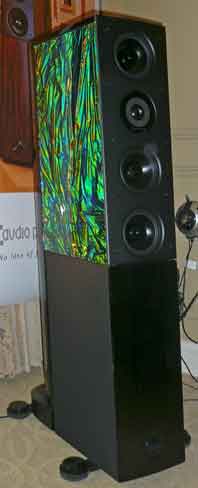 Rather disappointing was the new version of the Opera speakers from Germany’s Acapella. This is the unique huge horn speaker with the zero-mass ionic tweeter. These speakers are delightfully smooth, and it takes talent to make them sound as shrill and unpleasant as they did in that room. Congratulations!
Rather disappointing was the new version of the Opera speakers from Germany’s Acapella. This is the unique huge horn speaker with the zero-mass ionic tweeter. These speakers are delightfully smooth, and it takes talent to make them sound as shrill and unpleasant as they did in that room. Congratulations!
We spent some time in the Audio Research room, listening to the prototype of the DS450 amplifier. The model name points to the available power…per channel! We listened to Starker playing a Bach cello sonata from vinyl (on a Well Tempered Amadeus turntable). It was smooth, wonderfully spacious, and a delight. It was only after that we learned the truth: the DS450 is a class D amplifier! We usually consider class D to be an attempt to cure a disease that has yet to be invented, but we have to admit that with this amp Audio Research has nailed it.
And so ends CES 2010. It was the year of 3-D, as everyone was saying. It was also the year of the turntable, as vinyl massively overwhelmed the CD. And it was the year of the server. That is to say, if the music was digital, it was more likely to be playing from a computer hard drive than from a silvery disc.
For an exhibitor, a server has a major appeal: no trundling around dozens of easily-stolen CDs. The main disadvantage is that visitors can’t bring their own CDs. The major advantage is that visitors can’t bring their own CDs.
In the next few days we’ll probably see the official figure for the number of attendees at this yar’s CES. Our guess is that the CEA’s projection of 110,000 visitors won’t have been reached. That said, we don’t really expect it to say so.

